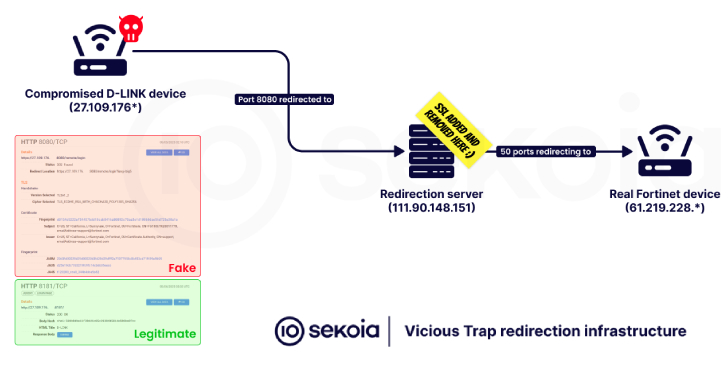
Why is IT Infrastructure Transformation Important?
Introduction
In today’s rapidly evolving digital landscape, businesses are increasingly reliant on technology to stay competitive and relevant. This dependence on technology underscores the critical importance of having a robust and adaptable IT infrastructure. IT Infrastructure Transformation is a strategic imperative for organizations of all sizes and industries. This article explores the reasons why IT infrastructure transformation is essential for modern businesses, examining the benefits it offers, the challenges it poses, and the key considerations for a successful transformation journey.
The Digital Transformation Imperative
The digital transformation wave has swept across industries, reshaping the way businesses operate and interact with their customers. Whether it’s enhancing customer experiences, streamlining operations, or improving decision-making through data analytics, digital transformation has become a business imperative. And at the heart of this transformation lies the IT infrastructure.
- Agility and Adaptability
One of the primary reasons why IT infrastructure transformation is important is its role in enhancing an organization’s agility and adaptability. Traditional legacy systems can be rigid and slow to respond to changing business needs. In contrast, modernized IT infrastructure, built on cloud computing, virtualization, and software-defined technologies, is inherently flexible. This flexibility enables businesses to rapidly scale up or down, deploy new services, and pivot in response to market shifts.
Consider the example of a retail business that once relied on a brick-and-mortar model but now must compete in the e-commerce space. To remain competitive, this business needs an agile IT infrastructure that can support online sales, manage inventory across multiple channels, and provide a seamless customer experience. Without IT infrastructure transformation, adapting to this new business model would be challenging and costly.
- Cost Efficiency
Cost efficiency is another compelling reason for IT infrastructure transformation. Legacy systems often come with high maintenance and operational costs. They may require extensive physical hardware, dedicated data centers, and a large IT team to manage and maintain them. In contrast, modern infrastructure solutions, such as cloud computing, offer a pay-as-you-go model, reducing capital expenditures and enabling businesses to scale their resources based on actual usage.
Moreover, IT infrastructure transformation can lead to energy savings. Legacy data centers tend to consume substantial amounts of power and generate significant heat, necessitating expensive cooling systems. By migrating to more energy-efficient infrastructure solutions, organizations can reduce their carbon footprint and lower their operating costs.
- Security and Compliance
In an era marked by an increasing number of cyber threats and stringent regulatory requirements, IT infrastructure transformation plays a pivotal role in enhancing security and ensuring compliance. Legacy systems may lack the robust security features and regular updates needed to fend off modern cyberattacks. By contrast, modern infrastructure solutions often come with built-in security measures and are more easily patched and updated to address vulnerabilities.
Furthermore, regulatory compliance, such as GDPR or HIPAA, demands strict data protection and privacy measures. Transforming IT infrastructure to meet these requirements is not just a matter of avoiding legal penalties; it also safeguards an organization’s reputation and customer trust.
- Scalability and Performance
Scalability and performance are critical drivers of IT infrastructure transformation. As businesses grow, their IT needs evolve. Legacy systems may struggle to keep up with increased workloads, leading to performance bottlenecks and downtime. Modern infrastructure solutions, on the other hand, are designed to scale horizontally, allowing organizations to seamlessly accommodate growing demands.
Consider the example of a software-as-a-service (SaaS) company experiencing rapid user growth. Without a scalable infrastructure, the company may encounter service outages, slow response times, and dissatisfied customers. IT infrastructure transformation enables the company to add more servers, storage, and networking resources as needed, ensuring optimal performance even during periods of high demand.
- Innovation and Competitive Advantage
Innovation is at the core of any successful business. IT infrastructure transformation facilitates innovation by providing a solid foundation for the adoption of emerging technologies. Businesses can leverage cloud computing, artificial intelligence, the Internet of Things (IoT), and other cutting-edge technologies to create new products and services, automate processes, and gain a competitive advantage.
For example, a manufacturer that embraces IoT sensors and data analytics can monitor equipment health in real-time, predict maintenance needs, and optimize production processes. This not only reduces downtime and maintenance costs but also positions the company as an industry leader in efficiency and reliability.
Challenges in IT Infrastructure Transformation
While the benefits of IT infrastructure transformation are clear, it’s essential to acknowledge that the journey is not without its challenges. Organizations must navigate several hurdles to ensure a successful transformation:
- Legacy Systems Integration
Many organizations have extensive investments in legacy systems that continue to be mission-critical. Integrating these systems with modern infrastructure can be complex and require careful planning. Legacy applications may not be compatible with cloud environments or require significant refactoring.
- Data Migration
Transferring data from legacy systems to modern infrastructure can be a daunting task. Data migration involves not only moving large volumes of data but also ensuring data integrity, security, and minimal downtime. It is a process that demands meticulous planning and execution.
- Skill Gaps
Modern IT infrastructure often relies on new technologies and paradigms, such as cloud computing, containers, and DevOps practices. Many organizations may lack the necessary skills and expertise to manage and optimize these technologies effectively. Addressing skill gaps through training and recruitment is essential.
- Security Concerns
The shift to modern infrastructure introduces new security considerations. Cloud environments, for example, require a different approach to security compared to traditional data centers. Organizations must invest in cybersecurity measures and staff training to protect their assets adequately.
Key Considerations for a Successful Transformation
To ensure a successful IT infrastructure transformation, organizations should consider the following key factors:
- Clear Strategy and Objectives: Define a clear transformation strategy that aligns with the organization’s overall goals. Identify the specific outcomes you want to achieve, whether it’s cost savings, improved performance, or enhanced security.
- Comprehensive Assessment: Conduct a thorough assessment of your existing IT infrastructure. Identify legacy systems, evaluate their compatibility with modern solutions, and determine which components are candidates for transformation.
- Cloud Adoption: Consider leveraging cloud services for scalability and cost-efficiency. Evaluate different cloud providers and choose the one that best aligns with your needs and budget.
- Data Strategy: Develop a comprehensive data strategy that includes data migration, storage, and management. Ensure data is protected, compliant with regulations, and accessible when needed.
- Security Framework: Implement a robust security framework that encompasses both on-premises and cloud-based assets. This includes encryption, identity and access management, and continuous monitoring.
- Talent Development: Invest in training and upskilling your IT team to ensure they have the necessary expertise to manage and optimize modern infrastructure.
- Change Management: Recognize that IT infrastructure transformation is not only a technological shift but also a cultural change. Communicate the changes effectively and involve employees in the transformation process.
Conclusion
IT infrastructure transformation is not a one-time project but an ongoing journey that adapts to the evolving needs of modern businesses. Embracing this transformation is crucial for organizations to stay competitive, agile, and secure in a digital world. While it comes with challenges, the benefits in terms of cost efficiency, scalability, security, and innovation far outweigh the obstacles. By carefully planning, executing, and continuously optimizing their IT infrastructure transformation efforts, businesses can position themselves for long-term success in the digital age.
Contact Cyber Defense Advisors to learn more about our Technology Infrastructure Transformation solutions.




